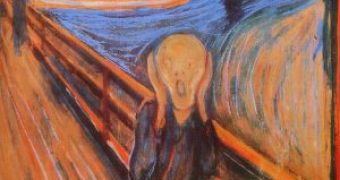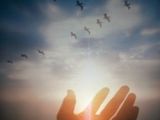Agoraphobia is a panic or anxiety disorder, like many other kinds of phobias - arachnophobia (fear of spiders), acarophobia (fear of mites), zoophobia (fear of animals), motorphobia (fear of automobiles), scelerophobia (fear of burglars), bacillophobia (fear of bacteria) and many other weird, yet true and proved phobias.
Panic attacks usually occur abruptly and last no more than half an hour, the longest. They are periods of intense fear or psychological distress and are usually caused by a wide range of triggers; each phobia having a certain trigger - for example, claustrophobia's main trigger is linked to elevators, trains, aircrafts or any other confined space. Symptoms manifested in a phobic person are usually the same for all panic attacks, including shortness of breath, restlessness, sweating, tingling sensations, trembling etc.
Panic attacks may be sporadic and occur infrequently, but when they are repeated, then the person that suffers from them is diagnosed with panic disorders or anxiety disorders. These disorders occur only when the specific trigger is met (for instance, in arachnophobia, individuals will go through panic attacks only if they see or feel a spider). Phobias are very common among people, as about 10% of people say they have experienced a panic attack per year.
However, these phobias and anxiety disorders may develop into chronic ones and then panic attacks become extremely frequent and come one after the other, leading to nervous exhaustion.
Agoraphobia is usually interpreted as "fear of the marketplace, of open spaces or very crowded places" due to the fact that the name of this panic disorder comes from Latin, where "agora" means "marketplace", while phobia means "fear." But this is not the appropriate and exact explanation of agoraphobia, which is actually explained as some people's fear of developing panic attacks or being in difficult situations outside the house, in unprotected, open or crowded places, where they cannot deal with certain situations or events.
They fear of being alone outdoors where they have no one to protect them from possible embarrassing or difficult happenings. That is why, usually, agoraphobics are entrapped in their living places, but they can receive visits and welcome visitors into their house. As long as they are in a protected place which they know very well and feel in control of, they can lead a happy and carefree life, living and working inside the four walls of their homes.
Similar to this exaggerate "addiction" to a safe, protective place developed by some agoraphobics is the dependence on a safe, protective person, experienced by some of the individuals that suffer from agoraphobia. Namely, they become more and more dependent on the presence of a person with them and around them.
In the absence of a certain person they become extremely attached to (a friend, sibling etc.) or of any other person, they have repeated panic attacks. Therefore, besides being dependent on the living space and homebound, agoraphobics may also become addicted to the presence of a "safe" person in their vicinity. When they are left alone in the house, they experience panic attacks and related symptoms. However, these situations are rather uncommon, as usual agoraphobic may also have a panic attack even in the presence of someone else.
Agoraphobia symptoms may develop slowly or quickly, depending on the person. There is no rule for this. Panic attacks can be treated with graduated exposure therapy or cognitive - behavioral therapy, other types of psychological therapies, complementary therapies etc. All these therapies calm down and relax the person and gradually persuade her/him to face their fears and overcome them. Medical treatment can also be prescribed to phobics - anti-anxiety and anti-depressant drugs.
Painting: Edward Munch, The Scream, 1893

 14 DAY TRIAL //
14 DAY TRIAL // 
